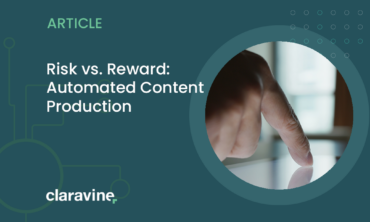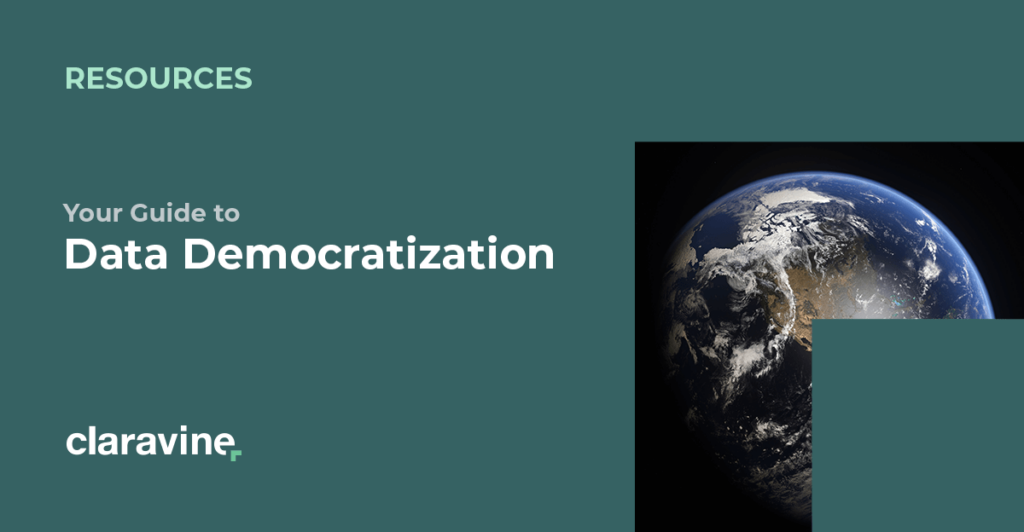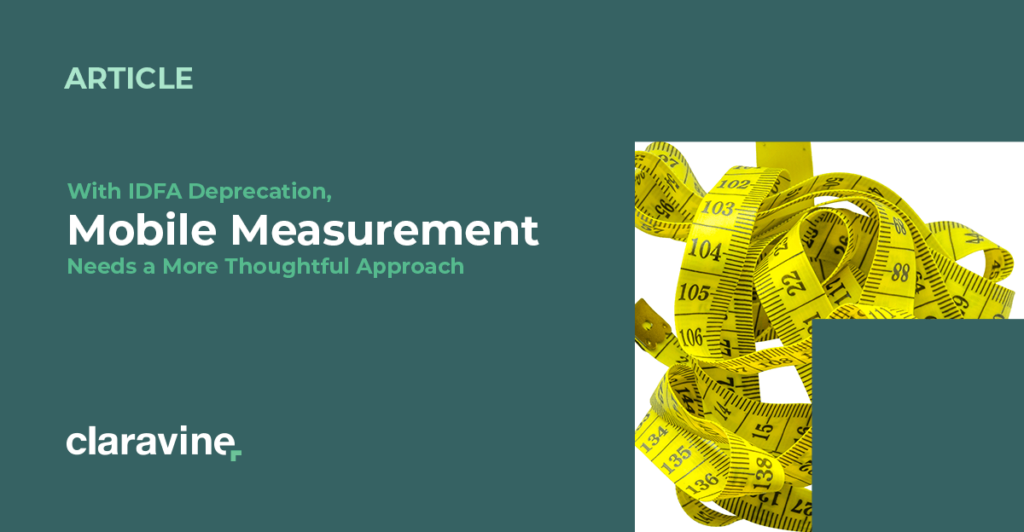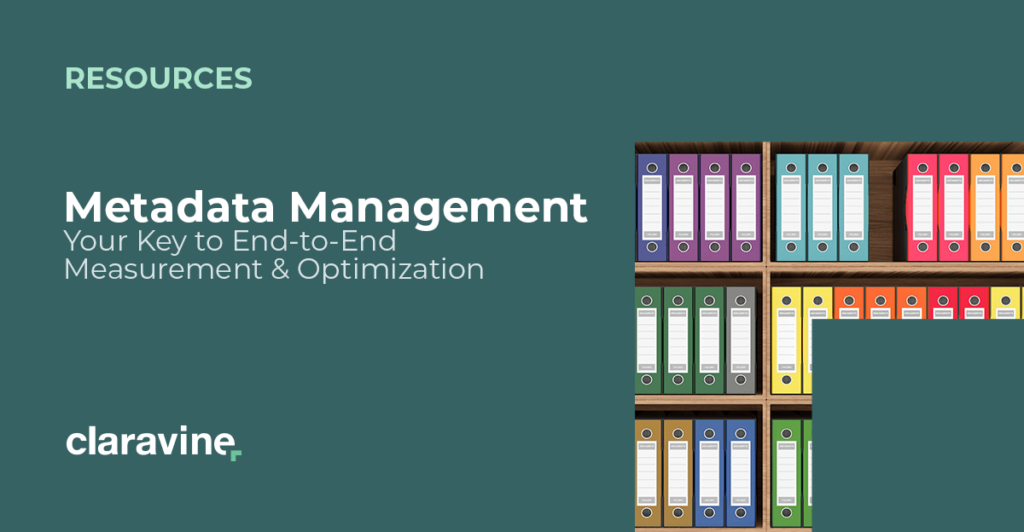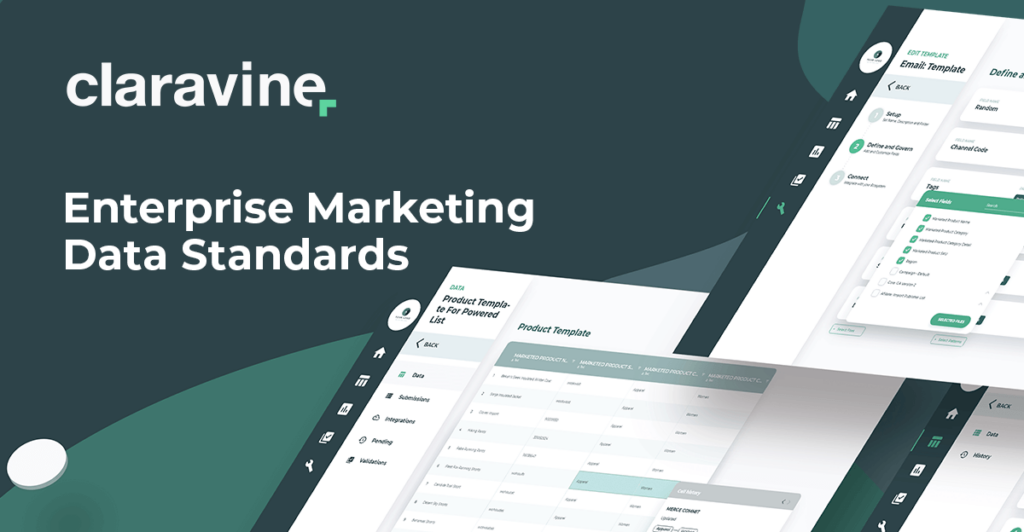Data-Driven Marketing Can’t Succeed in 2022 Without Integrity
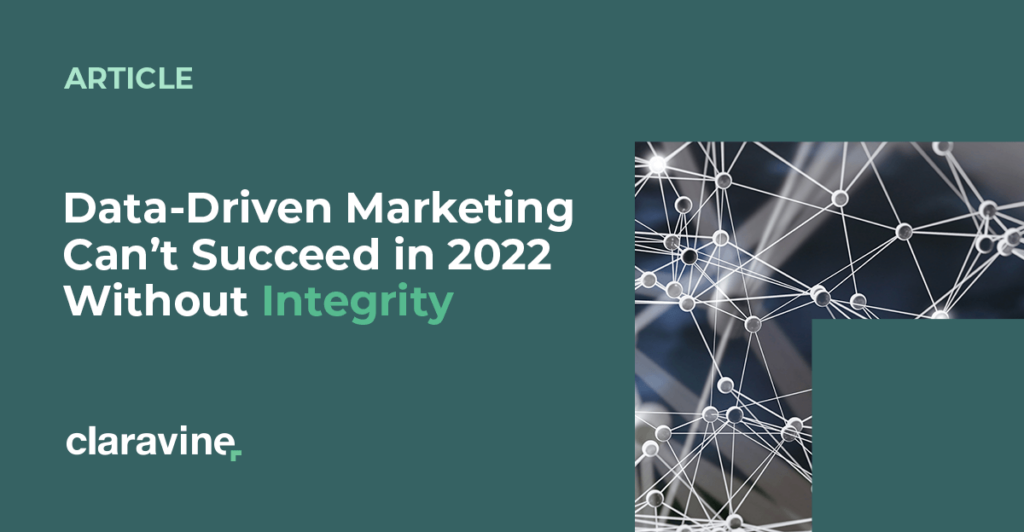
Your company has data. Lots of data. It’s been collecting it for years (decades?) from third parties and has also been hoarding stacks of first-party data (literal gold) from a plethora of CX touchpoints.
There are millions of dollars going into data collection and creation — but there’s too much unrealized ROI, overlapping SaaS tools, duplicate or wasted assets, and inefficient or broken collaboration.
Data sprawl is real and it’s as full of risk as it is with opportunity.
So, how do you stop wasting your (mountains of) marketing data and make better data-driven decisions?
The first step is to acknowledge a cold, hard truth: your company isn’t effectively organizing and storing its data. It’s also not ensuring a high enough level of data quality.
Bad data in, bad data out.
The insights pulled from your current data warehouse and interface are handicapped by the pitfalls of your current data management strategy — and within that, your metadata management strategy.
You’re capturing data from globally dispersed teams using an ever-growing web of SaaS tools to do their jobs. The headaches of data sprawl and data waste occur when there’s a lack of data standards.
Data standards create a common language — a unified taxonomy — of naming conventions, values, and other aspects of individual data assets. It’s a concept central to data integrity, itself crucial for any marketing strategy, data strategy, or measurement strategy to be effective and competitive.
So no matter where you look in 2022’s post-cookie, post-IDFA world for sources of truth and marketing performance insight, be sure you prioritize the integrity of both your marketing and your data (org-wide).
In This Article
This Data Burden’s On You — Here’s How to Own It
Mobile ad IDs and the sweet, sweet third-party cookies that drove so many of your business activities (marketing, content, and advertising, especially) are all riding off into the sunset. Well, the level of truth there is hotly debated but the message remains clear: 3P is out, 1P is the new black.
But you already knew that.

What you don’t know is how to reconfigure your approach to end-to-end measurement and balance the new walled gardens of shrinking third-party data with your ever-growing network of first-party data.
How do you create effective, personalized campaigns, collect reliable data, and draw accurate insights about what worked and what didn’t with this data burden hoisted onto your (company’s) back?
One Approach: Conscious Marketing
One element of your approach can be conscious marketing. From one perspective, it’s a shift from hyper-personalized marketing (driven by unique user identifiers) to a lighter-touch strategy.
Conscious marketing — as discussed in AdExchanger by marketing data and activation expert, Matterkind Global CEO Erica Schmidt — puts forth a framework of collecting only the necessary data with privacy at the forefront:
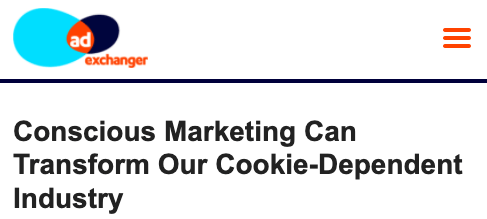

Good future identity solutions will involve conscious marketing, meaning brands must take a deliberate and respectful approach to communicate with people while being responsible and accountable to their own business.
This requires connecting messages that are respectful, inclusive, relevant, timely and engaging with real people – and that can’t be done without identity.
The right solution will depend on a brand’s goals, capabilities and infrastructure. But, in general, good identity solutions should follow these principles:
- Only use the data that’s necessary to create a customized experience. Avoid collecting all available information simply because it’s available.
- De-bias data sets to avoid sending outdated, insulting or alienating messages.
- Be precise in communication. Don’t exhaust or annoy people with repetitive messages.
- Be privacy-conscious.
Always address people with kindness and sensitivity.
Schmidt’s message comes from a more purpose-driven place — “The heart of the internet is at stake” — but her inroad aligns with a post-cookie world in which companies shift to first-party data strategies and new solutions to personalized marketing, measurement, and decision-making.
That brings us back to data standards. A company will struggle, if not fail, to achieve meaningful results in a conscious marketing approach — defined for our purposes here as simply, less-invasive marketing that utilizes and collects necessary data (as opposed to all available data) for precise, privacy-conscious messaging — without a common data language that gets the most out of that limited data.
So, now you’re being more efficient in data collection from the start (because you’re embracing aspects of conscious marketing in a post-cookie world), and you’re standardizing data classification so it’s readily available to whoever may need it to make data-driven decisions.
But, Schmidt also posits that:
Conscious marketing also helps us achieve the proposition of delivering the right message to the right person at the right time on the right platform (something we’ve collectively been striving for since the invention of online advertising).
Yet, conscious marketing without data standards is still at risk of data waste — and waste or duplication of marketing, advertising, and content assets. And that’s costly, especially when you’re already limiting the data you’re collecting and utilizing while trying to remain hyper-customer-focused.
Also costly are the imprecise decisions and insights derived from the data you’re collecting, be it first or third-party, conscious in spirit or not.
Conscious marketing runs the risk of losing its integrity, too. Who draws the lines of respect and privacy (outside of the technical boundaries put in place by Google, Apple, etc.). At its best, conscious marketing is a timely strategy and an enduring trend. But it must be kept on a tight leash. Data standards (and the management it entails) can serve as that leash to keep conscious marketing in line with its values while remaining crucially accurate.
It’s not just about the integrity of your marketing — it’s about the integrity of your data. Whether that data approach is “collect everything imaginable” or “collect only what’s absolutely necessary for a positive CX,” you need to know, understand, and trust the data you have.
That’s what prevents wasted data, inadequate privacy considerations, and less-than-effective teams and data-driven decision-makers. When your approach embraces a privacy-first, essential-data-only spirit, every data point counts even more than before.
Organizations can absolutely embrace conscious marketing, and it can make their marketing campaigns actually thoughtful to their customers. It may even be more effective, efficient, and with higher ROI than typical data-overload strategies.
But for conscious marketing — or any marketing based in a strategic data approach (that’s all of it, right?) — you have to trust your data if you want it to endure whatever privacy, measurement, and attribution changes come next.
Conscious or Not, Data Integrity Ensures Marketing’s Endurance & Effectiveness
Data integrity: data you can trust to be accurate, complete, connected, governed, and democratized — at its peak of data quality, usability, observability, and management.
The path to data integrity — not just for marketing teams, but analytics, data science, content/creative, and more — is paved with data standards.
Even in the most connected, collaborative enterprise teams, data are speaking different languages, and that hampers its value. Siloed teams must instead enact a data democracy with data governance that empowers and equips more accurate insights, better collaboration, and less waste of valuable data, assets, and insights.
Implementing enterprise data models upfront reduces its reliance on identity-based observation and shifts instead toward experimentation — based on a wealth of connected, aggregated campaign metadata. This also reduces the need for costly, time-intensive practices like ETL or interpretation.
This consistent, cohesive data taxonomy provides the high-octane data-fuel needed for:
- Measurement today, heavily reliant on third-party data
- Measurement tomorrow, still informed by third-party data, but primarily influenced by first-party
- Measurement in the future — which embraces experimentation, privacy, and aggregation
Data integrity is rooted in a common data language that improves data quality and allows for efficient validation and sharing. Applied to marketing departments (where ROI and measurement are most top-of-mind), marketing data standards make the necessary inroads into enterprise-wide data integrity efforts, as this better data ecosystem (managed by a data standards tool) catches on with content, analytics, and data science teams.
An approach like conscious marketing makes waves in the marketing department no doubt, but even more promising (if less immediately exciting or trendy) are the inroads this marketing approach makes towards data integrity, with its thoughtful, purposeful approach to data collection itself.
Zooming out from conscious marketing to pursue data integrity creates a sea-change across the enterprise. Crucially, it keeps the whole organization ready and agile for whatever changes come next, be it a more conscious data approach or the next changes in tracking, privacy, and measurement.
With org-wide data integrity, the utilization, usability, discoverability, accuracy, and completeness of data enrich the work of every team that touches it. Thus, your data-driven marketing decisions improve.
Enterprises then see substantial decreases in data waste and simultaneous improvements in ROI thanks to better sharing of assets, insights — and high-quality data with standards.
Data Waste Meets its Ultimate Foe: Data Integrity
With optimal data integrity, driven by data standards, governance, and democratization, your organization can experience game-changing improvements in data quality. And that means solving some of the biggest problems in enterprise data management, including:
- Incomplete data
- Siloed data
- Suboptimal data quality
- Data waste
- Content duplication, waste, and misplacement
- Lack of data continuity and connection for proper end-to-end measurement
- Disappointing ROI from investments in teams, tech/SaaS, and agencies
- Misinformed data-driven business decisions


